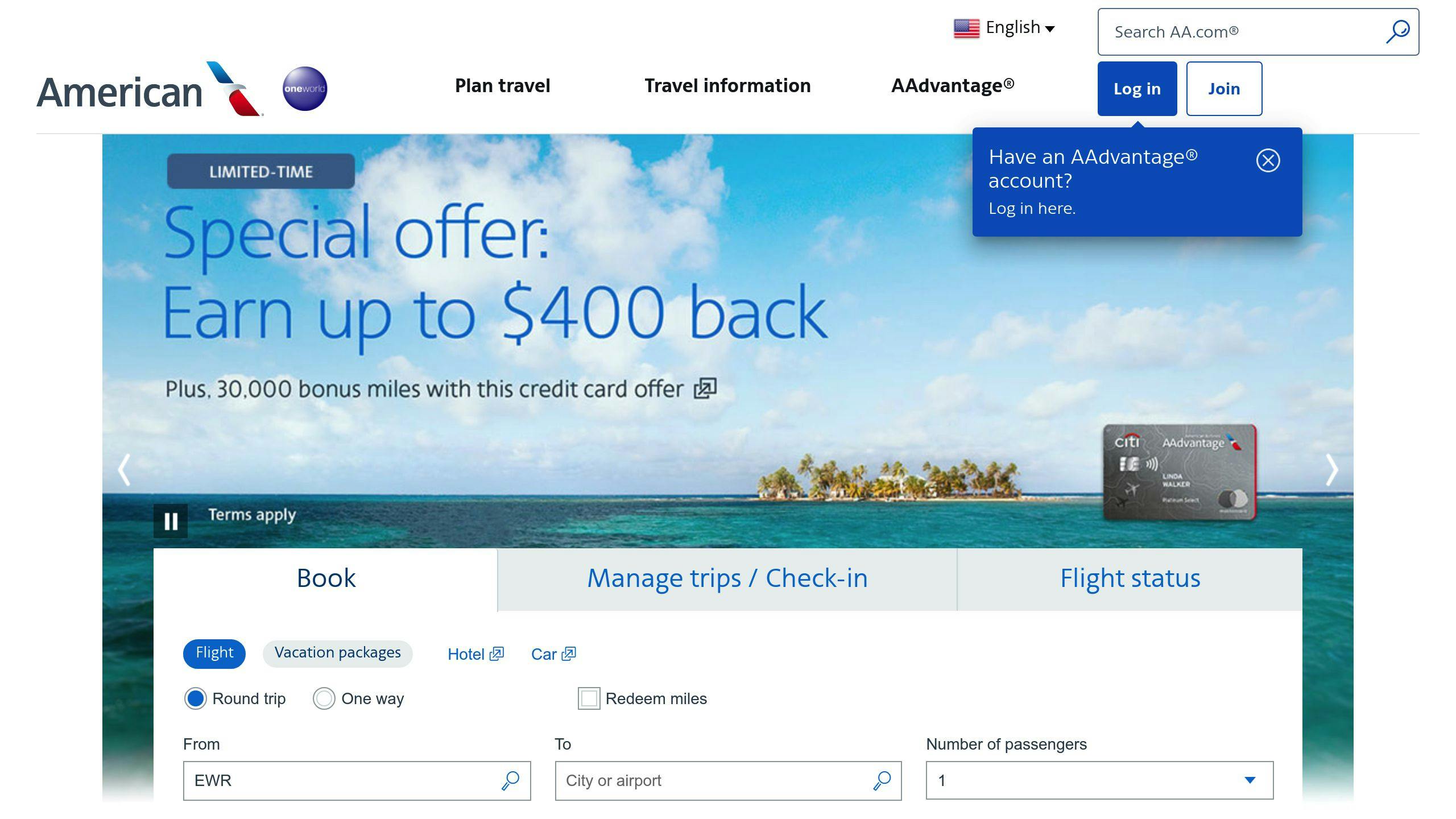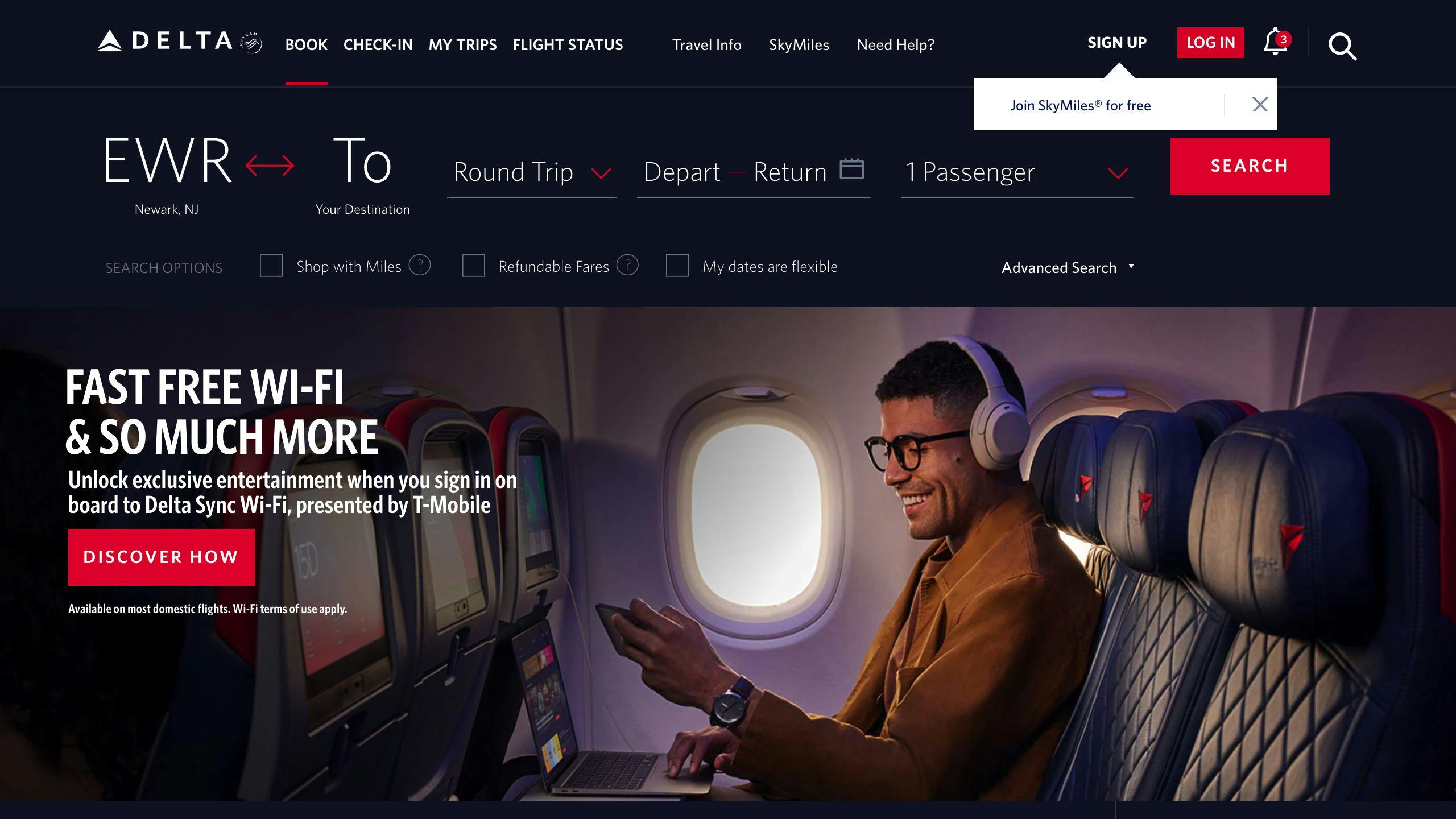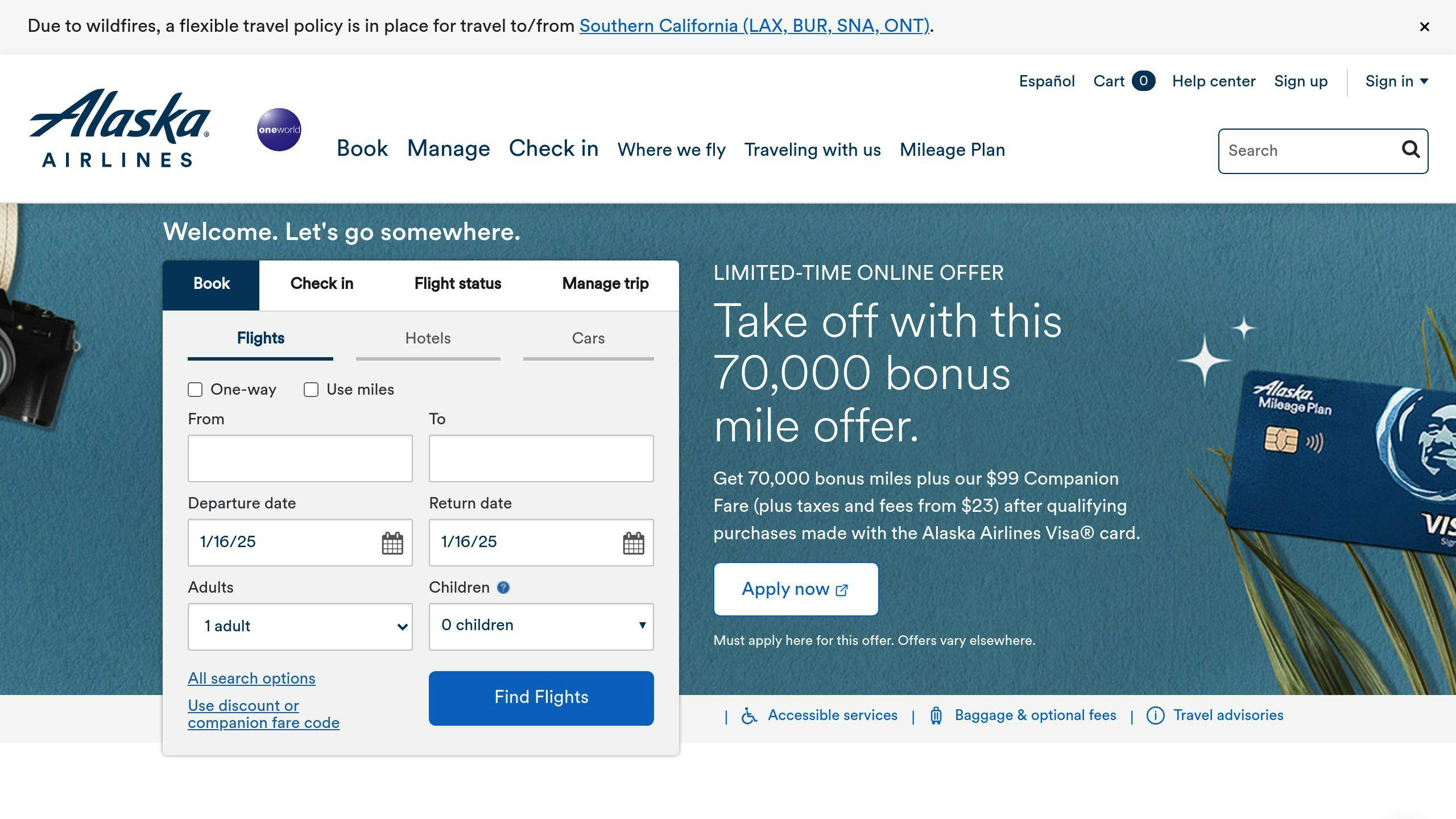Smart luggage is convenient, but airlines have strict rules due to lithium-ion battery risks. Here's what you need to know:
- Removable Battery: Required for all smart luggage. Must be removed and carried in the cabin for checked bags.
- Non-Removable Battery: Not allowed on any flights.
- No Battery: Fully allowed without restrictions.
Quick Tips:
- Check if your luggage battery is removable.
- Carry the battery in your cabin bag if checking luggage.
- Ensure batteries are under 100Wh capacity.
Airline Policies Overview
| Airline | Carry-On Rules | Checked Luggage Rules | Non-Removable Battery |
|---|---|---|---|
| American Airlines | Battery can stay installed (off) | Remove battery, carry in cabin | Not allowed |
| Delta Airlines | Same as above | Same as above | Not allowed |
| United Airlines | Same as above | Same as above | Not allowed |
| Virgin Australia | Same as above | Same as above | Not allowed |
| Qantas | Same as above | Same as above | Not allowed |
| Southwest Airlines | Same as above | Same as above | Not allowed |
| Alaska Airlines | Same as above | Same as above | Not allowed |
| Jet Airways | Same as above | Same as above | Not allowed |
Always check your airline's specific rules and prepare for inspections at check-in. Following these guidelines ensures a smooth and safe journey.
More Airlines Banning Smart Luggage
Smart Luggage Regulations Overview
The International Air Transport Association (IATA) has set clear rules for smart luggage to prioritize air travel safety. A key requirement is that smart luggage must have removable batteries, which passengers are required to carry in the cabin.
| Smart Luggage Type | Check-in Status | Cabin Status | Battery Rules |
|---|---|---|---|
| Removable Battery | Allowed (battery removed) | Allowed | Must be removed and carried in the cabin |
| Non-removable Battery | Not Allowed | Not Allowed | Not permitted on aircraft |
| No Battery | Allowed | Allowed | No restrictions |
To meet these regulations, many premium brands now include quick-release battery compartments that are accessible from the outside of the luggage, making it easier for travelers to comply.
"IATA notes that these policies have driven brands to adopt removable batteries, enhancing safety and compliance." [5][6]
Passengers should ensure their smart luggage has a removable battery, prepare to remove it during check-in, and keep it readily available for inspection.
Starting in March 2025, IATA will introduce new carry-on size limits of 22 x 14 x 9 inches [3]. This change could push manufacturers to create more compact designs to meet the updated standards.
Understanding how airlines enforce these rules is crucial for seamless travel with smart luggage.
1. American Airlines Policy

Battery Removal Rules
American Airlines requires smart luggage to have batteries that can be removed. For carry-on bags, the battery can stay installed as long as it's turned off. For checked luggage, the battery must be removed and carried with you in the cabin [6].
Carry-On vs. Checked Bag Guidelines
Here’s how the rules differ depending on the type of luggage:
| Luggage Type | Battery Rules |
|---|---|
| Carry-on Smart Luggage | Battery can stay installed (must be off) |
| Checked Smart Luggage | Battery must be removed |
| Bags with Non-Removable Batteries | Not allowed |
If your carry-on needs to be gate-checked, make sure the battery can be removed quickly. This policy applies to all American Airlines flights, whether domestic or international.
Following IATA Standards

Since January 2018, American Airlines has followed IATA's lithium-ion battery safety standards [1]. Many luggage manufacturers now design bags with quick-release battery compartments, making it easier for travelers to comply with these rules.
Premium smart luggage brands often include battery compartments that are simple to access and don’t require tools. This ensures passengers can meet American Airlines' requirements without hassle.
Knowing American Airlines' rules helps when comparing how other airlines manage smart luggage policies.
2. Delta Airlines Policy

Delta mandates that all smart luggage with lithium-ion batteries must have removable batteries, aligning with IATA standards. This policy aims to minimize fire risks [5][6].
Checked vs. Carry-On Restrictions
Delta's rules for smart luggage depend on whether the bag is checked or carried on:
| Luggage Type | Battery Requirements | Additional Notes |
|---|---|---|
| Carry-on Smart Bags | Battery can stay installed | Battery must be removable if gate-checked |
| Checked Smart Bags | Battery must be removed | Battery must travel in the cabin |
| Non-removable Batteries | Not allowed | These bags are prohibited entirely |
Safety and Compliance
Delta enforces these rules to align with IATA guidelines, prioritizing safety without sacrificing convenience. The focus is primarily on checked bags and carry-ons that are gate-checked [2][6].
"If a passenger does not comply with Delta's policy, they may not be allowed to check their smart bag, or they may be required to remove the battery before checking the bag. Non-compliance could result in delays or additional fees" [2][6].
Delta's approach is consistent with industry practices, as other major airlines, including United Airlines, enforce similar policies.
3. United Airlines Policy

United Airlines requires passengers to remove batteries from checked smart luggage and bring them into the cabin. For carry-on bags, the batteries can stay installed but must remain powered off. If a carry-on bag is gate-checked, the battery needs to be removed and carried separately. Bags with non-removable batteries are not allowed on any United flights. This rule, introduced in July 2018, applies to all United and United Express flights [7].
Checked vs. Carry-On Restrictions
| Luggage Type | Battery Rules |
|---|---|
| Checked Bags | Remove battery; carry in the cabin |
| Carry-on Bags | Battery can stay installed (powered off) |
| Gate-checked Bags | Remove battery; carry in the cabin |
United Airlines adheres to IATA safety guidelines to reduce the risk of fires caused by lithium-ion batteries in cargo holds. Passengers may be asked by staff to demonstrate that they can remove the battery to confirm compliance [7].
Additional Requirements
To prevent delays or issues, passengers should confirm their smart luggage meets these requirements before heading to the airport. United staff carefully inspect smart luggage at check-in areas to enforce these rules [7].
This strict approach aligns with broader industry practices, as other airlines, such as Virgin Australia, have adopted similar measures to enhance passenger safety.
4. Virgin Australia Policy

Battery Removal Rules
If you're flying with Virgin Australia, make sure to remove lithium-ion batteries from any checked smart luggage. These batteries must be carried in the cabin and secured to avoid short circuits or accidental activation during the flight.
Checked vs. Carry-On Rules
| Luggage Type | Battery Policy | Additional Information |
|---|---|---|
| Checked Bags | Batteries must be removed | Batteries must stay in the cabin |
| Carry-On Bags | Batteries can stay installed | Must meet safety requirements |
| Smart Luggage (Non-removable) | Not allowed | Completely prohibited |
Safety Checks
Virgin Australia conducts inspections at check-in to confirm batteries are removed and stored correctly. This ensures the safety of all passengers and aligns with international airline standards.
"Lithium-ion batteries must meet safety regulations for secure travel."
5. Qantas Policy

Battery Removal Requirements
For safety reasons, Qantas requires that all smart luggage batteries be removable. This policy helps reduce fire risks linked to lithium-ion batteries and applies to every flight on the Qantas network.
Checked vs. Carry-On Restrictions
| Luggage Type | Battery Status | Requirements |
|---|---|---|
| Carry-On Smart Luggage | Batteries can stay installed | Must be removable if asked to remove |
| Checked Smart Luggage | Batteries must be removed | Batteries must travel in the cabin |
| Non-Removable Battery Luggage | Not allowed | Completely banned from flights |
At check-in, passengers must demonstrate that batteries can be removed. This includes all lithium-ion-powered features such as USB ports, GPS trackers, or electronic locks.
Compliance with IATA Guidelines
Qantas strictly adheres to IATA safety rules, conducting detailed inspections at check-in to ensure smart luggage complies with the regulations.
"Lithium-ion batteries are a significant fire hazard in aircraft cargo holds, with 144 reported incidents between 2015 and 2018."
Brands like Horizn Studios and Monos offer smart luggage with removable batteries that meet these requirements. To avoid any issues at the airport, passengers should double-check their luggage complies with Qantas' rules.
Other airlines, like Southwest Airlines, enforce similar policies to prioritize passenger safety.
6. Southwest Airlines Policy

Battery Removal Rules
Southwest Airlines follows FAA guidelines requiring all lithium-ion batteries in smart luggage to be removable. This is a mandatory step to ensure safety during travel.
Checked and Carry-On Rules
| Luggage Type | Battery Rules | Allowed? |
|---|---|---|
| Carry-on Smart Luggage | Batteries can stay installed | Yes |
| Checked Smart Luggage | Batteries must be removed | Yes, if battery is removed |
| Non-removable Battery Luggage | Not applicable | No |
Following IATA Standards
Southwest Airlines complies with IATA safety regulations, allowing smart luggage with removable lithium-ion batteries after proper inspection during check-in. These procedures align with those of other airlines, creating consistent safety practices.
"Southwest Airlines allows smart bags with lithium-ion batteries as long as they are removable."
While there are no extra fees for bringing smart luggage, failing to comply with these rules could lead to:
- Luggage being denied at boarding
- Additional screening at the airport
- Possible travel delays
Additionally, all electronic features, such as GPS tracking, must either be turned off or set to airplane mode, as required by FAA regulations.
Southwest's approach ensures safety for all passengers and aligns with industry standards upheld by airlines like Alaska Airlines.
7. Alaska Airlines Policy

Battery Removal Requirements
Alaska Airlines mandates that all smart luggage must have removable lithium-ion batteries to prioritize safety. This rule applies to both checked and carry-on bags to ensure secure air travel.
Checked vs. Carry-On Restrictions
| Luggage Type | Battery Requirements | Additional Rules |
|---|---|---|
| Carry-on Smart Luggage | Battery must be removable | Battery can stay installed if accessible |
| Checked Smart Luggage | Battery must be removed | Battery must be carried in the cabin |
| Non-removable Battery Luggage | Not allowed | Prohibited in any form |
The airline recommends storing removed batteries in protective cases to reduce risks. Alaska Airlines adheres to IATA safety guidelines, which include mandatory battery removal and additional screening during check-in.
Special Considerations
For travelers needing help with medical devices or essential electronics, Alaska Airlines provides assistance. You can find detailed information online or speak with staff at check-in counters.
"Travelers must ensure their smart luggage meets IATA standards to avoid any issues during check-in or boarding."
Luggage that doesn't comply with these rules will not be allowed on board. Be sure to check your luggage specifications ahead of time to avoid disruptions.
These rules are consistent with broader industry practices, similar to policies followed by other airlines like Jet Airways.
8. Jet Airways Policy

Jet Airways has specific rules for smart luggage to ensure passenger safety. All smart bags must have removable lithium-ion batteries for both checked and carry-on luggage, adhering to international safety guidelines. For carry-on bags, the batteries can stay installed as long as they are accessible. For checked luggage, the batteries must be removed and carried in the cabin. Additionally, the batteries cannot exceed a capacity of 100Wh, and smart luggage with non-removable batteries is not allowed.
Checked vs. Carry-On Guidelines
- Carry-on luggage: Batteries can stay installed if they are accessible.
- Checked luggage: Batteries must be removed and carried in the cabin.
- Non-removable battery luggage: Not allowed.
Jet Airways inspects smart luggage at check-in to ensure these rules are followed. Their staff is trained to check for removable batteries and other key features of smart luggage.
This policy prioritizes passenger safety while staying in line with international aviation standards and industry practices, making it easier for travelers to switch between airlines without complications.
Traveler Considerations
Traveling with smart luggage? It's important to understand airline rules to avoid any hiccups. The key focus is on battery safety and accessibility.
Battery Requirements
Airlines require that smart luggage batteries must be removable. Here's what you need to double-check before your trip:
- The battery can be easily removed without tools.
- The battery capacity is within the limit of 100Wh.
Pre-Flight Preparation
A little preparation can save you a lot of time at the airport. Here's how to get ready:
| Preparation Step | Action Required | Why It Matters |
|---|---|---|
| Battery Check | Ensure the battery is removable and keep specs handy. | Meets airline safety rules. |
| Charge Level | Charge the battery to about 30-50%. | Keeps it safe for transport. |
| Backup Power | Bring a regular power bank. | Useful if smart features are restricted. |
Security Screening Considerations
Expect your smart luggage to get extra attention during security checks. Be ready to:
- Show how the battery can be removed if asked.
- Provide battery details like capacity and specifications.
- Remove the battery entirely if you're checking your luggage.
- Carry the removed battery in your carry-on.
These steps are especially important when flying through regions with different rules.
International Travel Notes
When traveling internationally, rules can vary. Check with each airline on your route to confirm their policies for smart luggage. This extra step can help you avoid surprises, especially when crossing borders with different regulations.
"Removable batteries are crucial for ensuring the safety of smart luggage during travel. They allow passengers to remove the battery and take it on board in the cabin, reducing the risk of fire and explosion[8][9]."
Smart Luggage Owner Tips
Traveling with smart luggage comes with its own set of rules. To avoid any hiccups, it's important to stay updated on airline policies and ensure your luggage meets the necessary requirements.
Preparation and Documentation
Before booking your flight, take time to review the latest airline policies regarding smart luggage. Pay close attention to battery regulations and size restrictions, especially those that align with international standards. A little research can save you from unexpected issues at the airport.
Make sure you have these items ready and easily accessible:
- Battery details that confirm compliance with airline capacity limits
- A guide for battery removal to streamline the process if needed
- Printed airline policy info for quick reference
Choosing the Right Smart Luggage
When shopping for smart luggage, focus on models designed to meet airline regulations. Look for features like:
- Compliance with global size and weight restrictions
- Battery compartments that are simple to access and remove
- Flexibility to meet varying airline rules
Picking the right luggage reduces the chances of travel disruptions caused by changing policies.
International Travel Tips
Flying internationally? Make sure to check the rules for every airline on your itinerary, including connecting flights. Policies can vary significantly between carriers and regions, so understanding these differences can help you avoid complications.
"Removable batteries are crucial for ensuring the safety of smart luggage during travel. They allow passengers to remove the battery and take it on board in the cabin, reducing the risk of fire and explosion[8][9]."
Staying Updated
Stay on top of policy changes by regularly checking airline websites and travel news. For example, European airports have already introduced stricter carry-on rules[10], which could signal similar changes worldwide. Keeping informed allows you to adjust your travel plans and avoid last-minute surprises.
Conclusion
Smart luggage rules have become an important part of air travel, with airlines enforcing strict policies to prioritize passenger safety. Most major carriers now require removable lithium-ion batteries, aligning with established safety standards [9][11].
To comply, manufacturers have adjusted their designs. Brands featured on Best Luggage Brands, for example, now offer smart luggage with easily accessible battery compartments, making travel less stressful.
Key guidelines include ensuring batteries are removable and under 100Wh, with compartments designed for easy access. Global organizations like ICAO and IATA continue to update these rules, making it essential for travelers to stay informed - especially for international trips or flights involving multiple airlines.
These standardized requirements reduce fire risks while allowing travelers to enjoy smart luggage features. Knowing and adhering to these rules ensures a safer and smoother journey.
TSA and FAA provide clear guidance to help travelers navigate these policies. By keeping up with these regulations, you can avoid disruptions and enjoy a hassle-free experience.
As airlines refine their policies, staying informed is the best way to ensure a smooth trip - whether you're flying domestically or internationally. Understanding and following these rules keeps your journey both safe and convenient.
FAQs
Why did airlines ban smart luggage?
Airlines banned certain smart luggage due to safety risks associated with lithium-ion batteries. These batteries can pose a fire risk, particularly in cargo holds where fires are difficult to detect and control.
"In 2017, FAA Administrator Michael Huerta highlighted lithium-ion battery risks, urging stricter safety measures." [2]
In response, the FAA issued Safety Alert for Operators (SAFO) 17011 in 2017, which led to standardized rules, including:
- Removable batteries: Smart luggage must have batteries under 100Wh that can be removed and carried in the cabin.
- Carry-on requirements: If the battery is removed, it must stay with the passenger in the cabin.
A study by the NTSB showed that lithium-ion fires spread rapidly and are challenging to manage in confined areas like aircraft cargo holds [4]. This data reinforced the need for strict regulations across airlines.
To meet these rules, many manufacturers have redesigned their smart luggage. Today, several brands now offer models with easily accessible battery compartments, ensuring compliance with airline policies. These changes not only address safety concerns but also make traveling with smart luggage more convenient for users.

